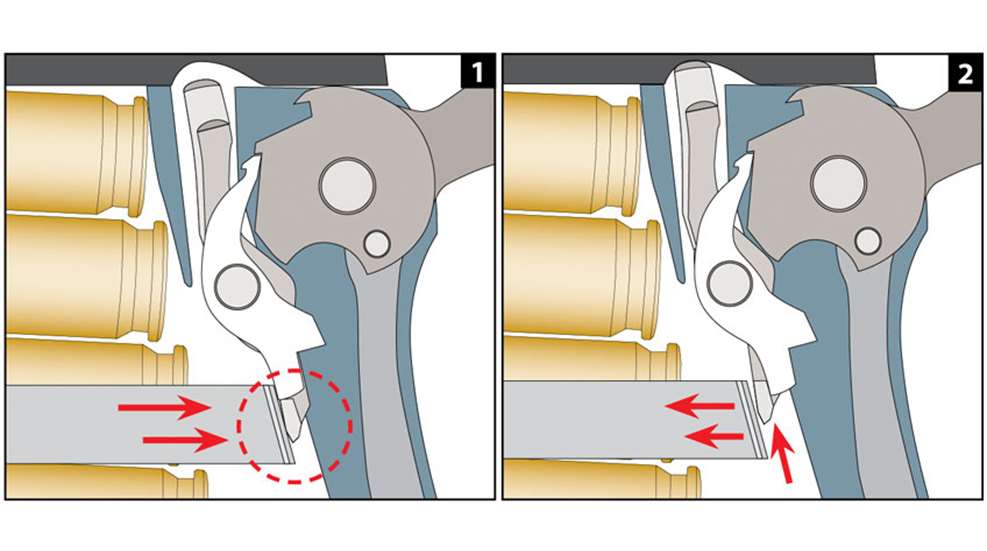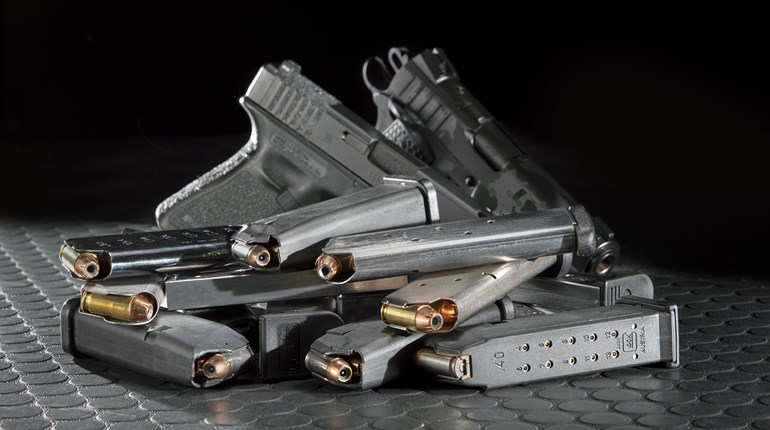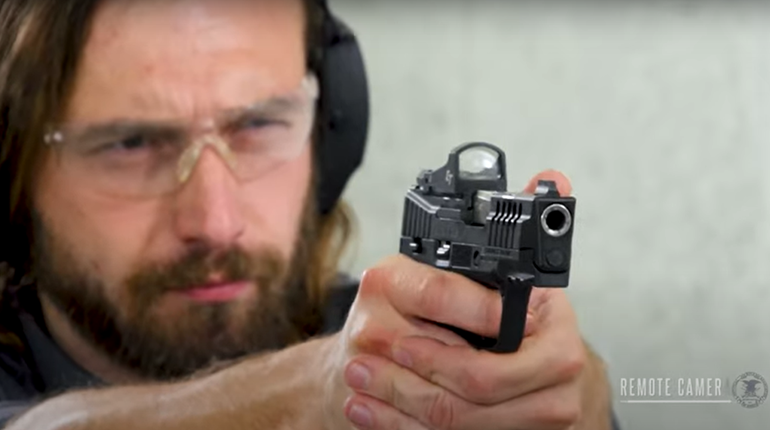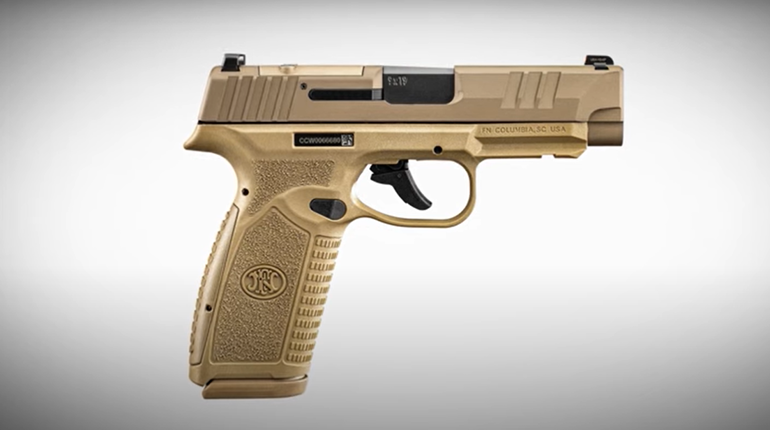
After the slide cycles, pressure on the trigger will keep the disconnector trapped beneath the sear (1). When the trigger is released, the disconnector is allowed to move back into position (2).
After much discussion about mechanical safeties in pistols, my Wednesday night defensive-pistol group has come to an impasse in what the true purpose of a disconnector is in a semi-automatic pistol. Some say it is a safety and some say it is a limiting device that allows only one shot per pull of the trigger. I can’t even find the disconnector on my pistol, so it’s hard for me to argue the point one way or another. Is it possible to test the disconnector to see if it is working without firing the gun? Your thoughts on the subject would be greatly appreciated.
Tom McGee
Nashville, TN
The disconnector (sometimes called the disconnect in some circles) has a two-fold purpose in semi-automatic pistols. One of them is to disengage the connection between the trigger and the sear (hammer or striker, as the case may be in a particular pistol) each time a shot is fired. The trigger must be released to reset or reconnect the trigger to the part from which it was disconnected in order to fire the next shot. This, as the very definition of semi-automatic, allows one shot per pull of the trigger for as long as the shooter desires or until the ammunition supply is depleted.
The disconnector also performs what I consider a safety function. When activated, it prevents the pistol from firing out of battery. Out of battery can be defined as when the slide and barrel are not fully engaged to contain the pressure of the cartridge at the moment of firing. If a pistol were to fire out of battery, there is a strong likelihood that there would be a high-pressure-gas release from an unsealed chamber or ruptured cartridge case, either of which can be catastrophic in nature to the gun and potentially cause injury to the shooter.
In a semi-automatic pistol, the disconnector is put into operation once the slide is moved to the rear as little as one-tenth of an inch on the frame. In essence, this ensures the gun won’t fire in a potentially unsafe condition. In a 1911 (and some of the older-design pistols), the disconnector is a separate part unto itself. It can be easily identified by looking at an exploded-parts drawing of the pistol in question. Some of the more modern designs combine the function of the disconnector with a portion of the trigger bar and may not list the disconnector as a separate component in their parts drawings.
Testing the disconnector function on a pistol is a simple and easy process that anyone with the least bit of gun-handling ability can accomplish. The first thing to do in this process is unload the pistol, check it visually and physically ensure there is no ammunition or magazine in the gun, then store the ammunition out of your immediate work area. (If your pistol has a magazine safety, you will have to insert and seat an empty magazine to perform this test. Make doubly sure there is no ammunition in the magazine or work area.)
Once the pistol is verified clear and empty, release the slide fully forward. Next, pull the slide rearward one-tenth of an inch or a bit more. Then, while holding the slide in a slightly open position, pull the trigger. It should not release the hammer or striker. This proves mechanically that the pistol will not fire out of battery.
To test the semi-automatic function with an unloaded pistol, close the slide on an empty chamber, point the handgun in a safe direction and pull the trigger, keeping it held to the rear. An audible sound of the hammer falling or the striker releasing should be heard. Now, cycle the slide and then slowly release the trigger forward, listening for the click of the trigger reconnecting to fire the next shot. Then, pull the trigger again to release the hammer or striker, and the release should again be apparent.
Regardless of whether you want to call the disconnector a safety or not, now you are familiar with the function of the disconnector and exactly how to check the operation of it on your semi-automatic pistols.





































